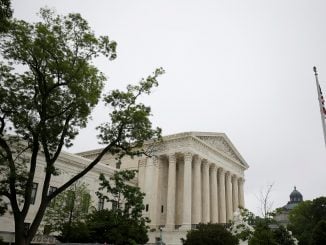WASHINGTON, D.C. — The Supreme Court on Monday said it won’t take up a case that asked it to decide whether it’s sex discrimination for the government to require only men to register for the draft when they turn 18.
In a statement, three justices said Congress is weighing whether to change the Military Selective Service Act, which requires men but not women to register for the draft. They said that was a reason for the court not to take the case.
“It remains to be seen, of course, whether Congress will end gender-based registration under the Military Selective Act. But at least for now, the Court’s longstanding deference to Congress on matters of national defense and military affairs cautions against granting review while Congress actively weighs the issue,” Justice Sonia Sotomayor wrote in a statement for herself, Justice Stephen Breyer and Justice Brett Kavanaugh.
The question of whether it’s unconstitutional to require men but not women to register could be viewed as one with little practical impact. The last time there was a draft was during the Vietnam War, and the military has been all-volunteer since. But the registration requirement is one of the few remaining places where federal law treats men and women differently, and women’s groups are among those arguing that allowing it to stand is harmful.
Ria Tabacco Mar, the director of the American Civil Liberties Union’s Women’s Rights Project, who had urged the court to take up the issue, said that requiring men to register imposes a “serious burden on men that’s not being imposed on women.”
Men who do not register can lose eligibility for student loans and civil service jobs, and failing to register is also a felony punishable by a fine of up to $250,000 and five years in prison. But Tabacco Mar said the male-only requirement does more than that.
“It’s also sending a tremendously harmful message that women are less fit than men to serve their country in this particular way and conversely that men are less fit than women to stay home as caregivers in the event of an armed conflict. We think those stereotypes demean both men and women,” said Mar, who represents the National Coalition For Men and two individual men challenging the law.
Even if the draft is never used again, retaining the men-only requirement sends a “really damaging message,” she said.
A group of retired senior military officers and the National Organization for Women Foundation were among those that had urged the court to take the case.
The issue of who has to register for the draft has been to the court before. In 1981, the court voted 6-3 to uphold the men-only registration requirement. At the time, the decision was something of an outlier because the court was regularly invalidating gender-based distinctions in cases about other areas of the law. Many of those cases were brought by the founding director of the ACLU’s Women’s Rights Project, Ruth Bader Ginsburg, who became a justice in 1993.
The last time the high court considered the Military Selective Service Act, then-Justice William Rehnquist explained that the purpose of registration “was to prepare for a draft of combat troops.” He said that because women could not serve in combat, the law was not unlawful sex discrimination that violated the Constitution.
But military policy has changed. In 2013, the Department of Defense lifted the ban on women serving in combat. Two years later, the department said all military roles would be open to women without exception.
Just last year, a congressional commission concluded that the “time is right” to extend the obligation to register to women. Sotomayor pointed to that report in noting Congress is studying the issue.
The Biden administration had urged the justices not to take the case and to let Congress instead tackle the issue. Administration lawyers wrote in a brief that any “reconsideration of the constitutionality of the male-only registration requirement … would be premature at this time” because Congress is “actively considering” the issue.
The case is National Coalition For Men v. Selective Service System, 20-928.



